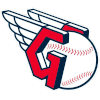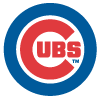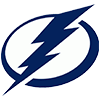Once upon a time, radio was the primary medium for consuming sports outside of attending games in person. The rise of television -- and subsequently streaming on personal laptops, tablets, and phones -- knocked radio off its once ubiquitous perch, but radio still fills a large and important niche for sports fans.
In honor of National Radio Day -- celebrated annually on August 20 -- let's take a look at some of the biggest names in the history of radio and examine what the future may hold for those at the pinnacle of the broadcasting profession.
The Rise and Fall of Radio
The advancement of radio allowed live sporting events to be transmitted to the public, so fans no longer had to wait until the following day's newspapers to find out how their favorite teams fared. The first live play-by-play radio broadcast was a 1921 boxing match in Pittsburgh. Radio then enjoyed a lengthy reign as the predominant method of consuming news, sports, and entertainment.
The first televised sporting event in the United States occurred in 1939, but it took a while before TV ownership ramped up enough to compete with radio. Just one percent of American households had a television in 1948, and while TV ownership rose to 75 percent by 1955, the grainy, black and white visuals available at the time didn't outclass radio in the way today's high-definition productions do.
Even with TV, internet and social media to compete with nowadays, radio still pulls in its fair share of fans. While 64 percent of modern Americans sports fans watch sports live on television, a respectable 21 percent still use radio for at least part of their sports consumption. That number is remarkably stable among age groups, which indicates that growing up with radio as a primary method of consuming sports hasn't led to much of a preference for the old-school radio experience over modern comforts. Nineteen percent of sports fans aged 18-29 ingest at least some sports content over radio, compared to 22 percent of those in the 30-50 range and 23 percent of those aged 51-plus; conversely, live TV consumption jumps from 45 percent at 18-29 to 87 percent for those 51 or older.
Sports Talk Radio
Radio is no longer the preferred way to ingest live sports given the ease of obtaining a broadcast with a visual element, but sports talk radio remains tremendously popular. While radio comes up short when compared to watching a sporting event that's unfolding with your own eyes, it's still an excellent medium for verbal pre-game and post-game analysis.
The concept of sports talk radio dates back to Bill Mazer on New York's WNBC in 1964, and sports talk radio is still thriving in both national and local markets on the eve of its 60th anniversary. Most of the demand for sports talk radio comes from commuters on their morning and afternoon/evening drives to and from work, as radio only has to compete with the likes of podcasts and other audio-based media in cars. Boston's WBZ-FM is among the most popular sports radio stations in the country, both by market share and number of listeners.
Yesterday's Radio and TV Legends
The majority of today's most popular announcers are associated with their television work, but many industry icons got their start in radio and/or intermingled radio and TV work throughout their careers. The late Jack Buck did St. Louis Cardinals play-by-play for both television and radio over the course of his legendary career. Buck also worked primarily in radio for football, as his 17 Super Bowl radio calls for CBS are the most all-time for any announcer on any radio station. Perhaps as a sign of the changing times, Jack's son Joe Buck is known primarily for his television work, first doing baseball, and more recently football.
Numerous other well-known TV broadcasters at or near the ends of their respective careers also served as radio announcers for much of their primes. Dick Enberg started his career calling Rams and Angels games on Los Angeles radio before switching primarily to television for football, baseball and tennis coverage, first on NBC and later ABC. Marv Albert was both the radio and TV voice of the New York Knicks from 1967-2004, and the legendary Vin Scully called the World Series for CBS Radio from 1979-82 and 1990-97 in addition to serving as both the radio and TV voice of the Dodgers from 1950-2016.
Radio Icons of Today and Tomorrow
With radio having been eclipsed by television, it's natural for the top broadcasting talent to gravitate to TV, but there's still a place for legendary announcers on the radio. Brent Musburger has been announcing big games since the 1960s, having broadcast numerous memorable NFL, NBA, college football, and college basketball games. Now that he's winding down his legendary career, Musburger has moved his primary focus to the radio, working as the play-by-play announcer for the Raiders.
Radio's unlikely to see a resurgence any time soon, but it isn't going away, either, as indicated by sports radio usage holding close to steady among fans of all ages. Musburger's path will likely be emulated by other big-name broadcasters known primarily for their TV work. A late-career focus on radio could allow them to keep fulfilling their love for announcing in a less scrutinized environment, much like how soccer stars such as Zlatan Ibrahimovic and Lionel Messi moved from top-flight European leagues to MLS for the twilight years of their careers.
For announcers in their prime, radio could offer an opportunity to expand their brand. John Sterling has been the radio voice of the Yankees since 1989, but Yankee TV play-by-play announcer Michael Kay has arguably gotten more recognition from radio in recent years by being the namesake of the Michael Kay Show on 98.7 FM ESPN New York – the No. 1 afternoon radio program in the New York market. Sports talk radio allows broadcasters to showcase their personalities more than doing play-by-play, so while people rarely consume live sports on radio except out of necessity nowadays, sports talk radio still offers an important medium for announcers looking to emulate the success of legends like Jack Buck and Vin Scully in the modern sports-consumption landscape.



























